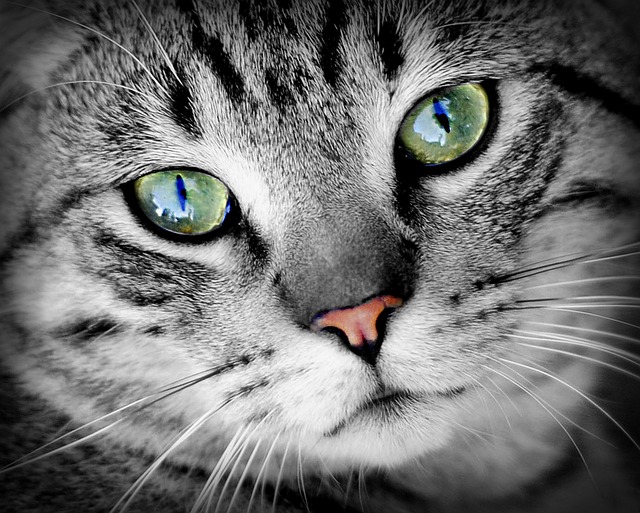Cats have dozens of movable vibrissae (whiskers) over their body, especially their face. Vibrissae are usually thicker and stiffer than other types of hair but consist of inert material and contain no nerves, like other hairs. They are different from other hairs because they are implanted in a special hair follicle incorporating a capsule of blood called a blood sinus and are stimulated by sensory nerves. Cat whiskers have several functions:
Navigation and Safety – whiskers alert a cat to actual objects as well as changes in air currents in a room. It helps them to keep from bumping into the objects and people. A cat will move its whiskers forward as it enters a room. The top two rows of whiskers can move independently of the other whiskers, and this change in direction helps it gather information on the room and its contents so it can go through it safely. Cats also have whiskers on their eyes which trigger protective blink reflexes to protect the eyes from damage.
Mood – the position of a cat’s whiskers can also indicate mood. Content cats hold their whiskers slightly to the side, while curious cats push their whiskers slightly forward to gather information on the new item that’s presented to them. Frightened cats hold their whiskers back against their cheeks to appear less threatening, while angry cats also pull back their whiskers.
Measuring: It is often said that cats use their whiskers to gauge whether an opening is wide enough for their body to pass through. This is often supported by the observation that the whiskers of individual cats extend out to about the same width as the cat’s body. However, at least one report disputes this stating that whisker length is genetically determined and does not vary as the cat grows thinner or fatter. (vets.org.nz, wiki, TIFO (image)







